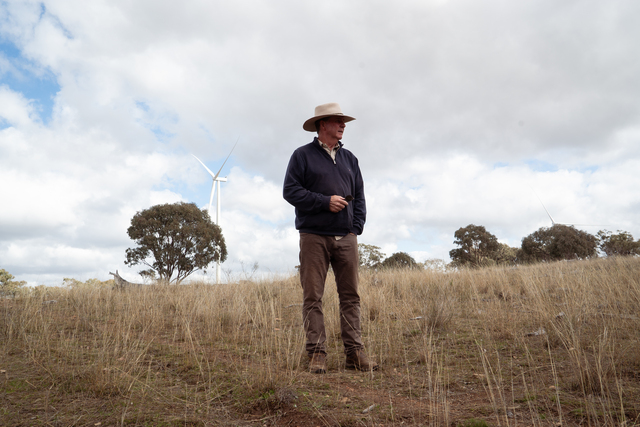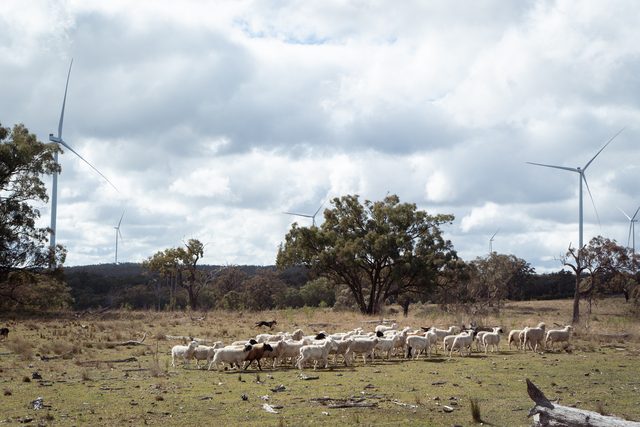
A debilitating drought in the Traprock region of south east Queensland in 2012 spurred former AgForce and National Farmers’ Federation (NFF) president Brent Finlay to build wind turbines on his 4500ha mixed farm, Cooinda.
The renewable energy source, according to Mr Finlay, gave him the opportunity to diversify and provided a secure secondary income stream to offset the fickle cost and climate variables of agriculture.
“Renewables created an opportunity in our region for diversification, not every region has that opportunity,” he said.
Mr Finlay said a weakening wool industry had recently prompted him to replace his Merino sheep flock with prime lambs – “ a lot of Dorpers“ – cattle and goats.
He is also “looking carefully“ at carbon and biodiversity markets.
“If you’re a farmer, you just do what you’ve got to do,“ he said.
Mr Finlay is now involved – alongside nine other landholders – in a big project built by Acciona, which is one of the largest wind farms in the Southern Hemisphere.
He advises other landholders interested in renewable energy projects to engage a legal team with extensive experience working in the field.
“That is so important because this industry is different again to the gas industry. You need to source as much information as you can.”
Mr Finlay said he had visited 17 wind farms in Australia and New Zealand and urged other landholders considering hosting developments to do likewise.
“It is so important to understand what that industry is and how it operates,“ he said.
“It is not just the turbines, it is all of the infrastructure that comes in with that.”
In September, Mr Finlay will attend the Farming Forever National Summit in Canberra to engage with key issues shaping the future of agriculture.
He said he expected his audience to be a mix of renewable energy supporters and opponents, those with question marks and others impacted by projects in some way.
“My role, and I’ve probably been quite public about this, is to share my experience.
“It’s the good, the bad, the ugly and that’s what people will get.
“And also, I think where most of the learnings come from, are out of the questions that people have, which I find really interesting.“
Mr Finlay was at the NFF when Farmers for Climate Action first came into the membership of NFF.
“It was a very large milestone for a fledgling organisation in becoming a credible farm advocate for rural and regional
Australia,“ he said.
“Renewable energy brings one of the most significant changes in rural and regional Australia and in agricultural production systems nationally.
“I look forward to the opportunity to network and be aware of current advocacy work. Farmers draw on insights from Farmers for Climate Action around future policy development.”







